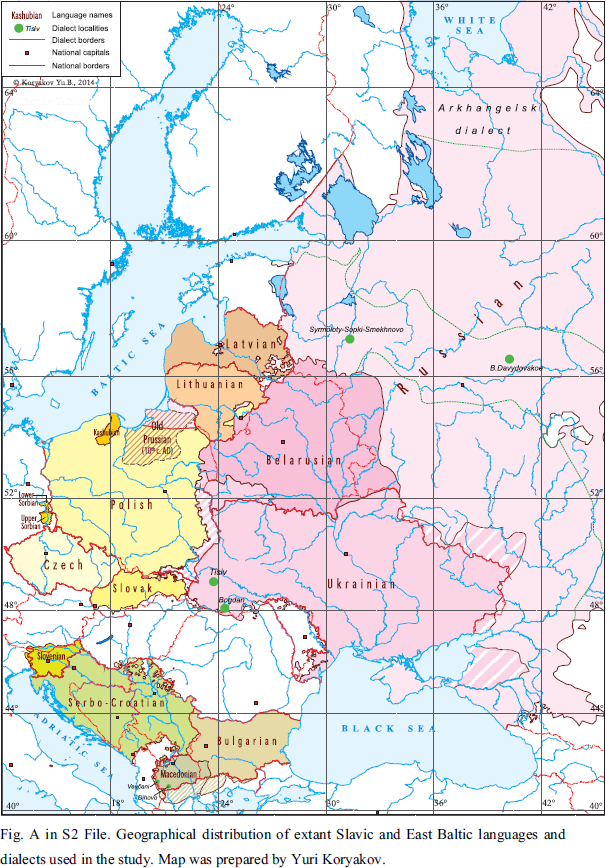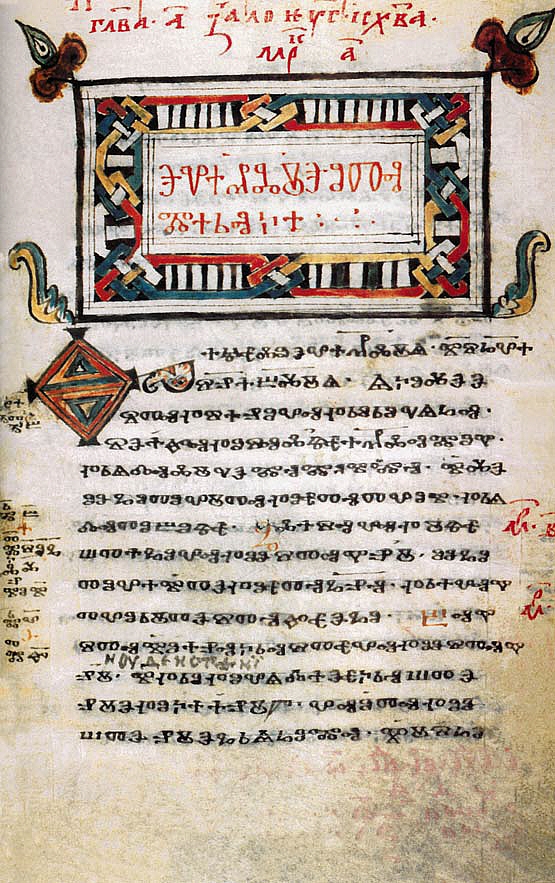|
Yandex.Translate
Yandex Translate (russian: Яндекс Переводчик, r=Yandeks Perevodchik) is a web service provided by Yandex, intended for the translation of text or web pages into another language. The service uses a self-learning statistical machine translation, developed by Yandex. The system constructs the dictionary of single-word translations based on the analysis of millions of translated texts. In order to translate the text, the computer first compares it to a database of words. The computer then compares the text to the base language models, trying to determine the meaning of an expression in the context of the text. In September 2017, Yandex.Translate switched to a hybrid approach incorporating both statistical machine translation and neural machine translation models. The translation page first appeared in 2009, utilizing PROMT, and was also built into Yandex Browser itself, to assist in translation for websites. Supported languages Immediately after the launch of ... [...More Info...] [...Related Items...] OR: [Wikipedia] [Google] [Baidu] |
Yandex Translate
Yandex Translate (russian: Яндекс Переводчик, r=Yandeks Perevodchik) is a web service provided by Yandex, intended for the translation of text or web pages into another language. The service uses a self-learning statistical machine translation, developed by Yandex. The system constructs the dictionary of single-word translations based on the analysis of millions of translated texts. In order to translate the text, the computer first compares it to a database of words. The computer then compares the text to the base language models, trying to determine the meaning of an expression in the context of the text. In September 2017, Yandex.Translate switched to a hybrid approach incorporating both statistical machine translation and neural machine translation models. The translation page first appeared in 2009, utilizing PROMT, and was also built into Yandex Browser itself, to assist in translation for websites. Supported languages Immediately after the launc ... [...More Info...] [...Related Items...] OR: [Wikipedia] [Google] [Baidu] |
Statistical Machine Translation
Statistical machine translation (SMT) is a machine translation paradigm where translations are generated on the basis of statistical models whose parameters are derived from the analysis of bilingual text corpora. The statistical approach contrasts with the rule-based approaches to machine translation as well as with example-based machine translation, and has more recently been superseded by neural machine translation in many applications (see this article's final section). The first ideas of statistical machine translation were introduced by Warren Weaver in 1949, including the ideas of applying Claude Shannon's information theory. Statistical machine translation was re-introduced in the late 1980s and early 1990s by researchers at IBM's Thomas J. Watson Research Center and has contributed to the significant resurgence in interest in machine translation in recent years. Before the introduction of neural machine translation, it was by far the most widely studied machine translati ... [...More Info...] [...Related Items...] OR: [Wikipedia] [Google] [Baidu] |
PROMT
ProMT is a developer of language translation software for businesses and private users since 1991. The company provides on-premises software based on neural technologies. History On March 6, 1998, ProMT launched a free online translation services, which is now known as PROMT.One. In 1997, ProMT and the French company Softissimo developed a line of products for the European company Reverso. Technology Historically, ProMT systems used rule-based machine translation (RBMT) technology. In 2011 a hybrid approach which combined rule-based and statistical MT was implemented. In 2019, ProMT introduced its new neural technology and flagship solution - PROMT Neural Translation Server. Since then all MT systems developed by ProMT are based on neural machine translation. The software can run on Microsoft Windows, Linux, MacOS, iOS and Android and works in offline mode providing secure machine translation. As of 2022, it translates 45 languages from and to English, German, and Russ ... [...More Info...] [...Related Items...] OR: [Wikipedia] [Google] [Baidu] |
Yandex Translate Icon
Yandex LLC (russian: link=no, Яндекс, p=ˈjandəks) is a Russian multinational technology company providing Internet-related products and services, including an Internet search engine, information services, e-commerce, transportation, maps and navigation, mobile applications, and online advertising. It primarily serves audiences in Russia and the Commonwealth of Independent States of the former Soviet Union, and has more than 30 offices worldwide. The firm is the largest technology company in Russia and the second largest search engine on the Internet in Russian, with a market share of over 42%. It also has the largest market share of any search engine from Europe and the Commonwealth of Independent States and is the 5th largest search engine worldwide after Google, Bing, Yahoo!, and Baidu. Its main competitors on the Russian market are Google, VK, and Rambler. Yandex LLC's holding company, Yandex N.V., is registered in Amsterdam, the Netherlands as a '' ... [...More Info...] [...Related Items...] OR: [Wikipedia] [Google] [Baidu] |
Belarusian Language
Belarusian ( be, беларуская мова, biełaruskaja mova, link=no, ) is an East Slavic language. It is the native language of many Belarusians and one of the two official state languages in Belarus. Additionally, it is spoken in some parts of Russia, Lithuania, Latvia, Poland, and Ukraine by Belarusian minorities in those countries. Before Belarus gained independence in 1991, the language was only known in English as ''Byelorussian'' or ''Belorussian'', the compound term retaining the English-language name for the Russian language in its second part, or alternatively as ''White Russian''. Following independence, it became known as ''Belarusan'' and since 1995 as ''Belarusian'' in English. As one of the East Slavic languages, Belarusian shares many grammatical and lexical features with other members of the group. To some extent, Russian, Rusyn, Ukrainian, and Belarusian retain a degree of mutual intelligibility. Its predecessor stage is known in Western aca ... [...More Info...] [...Related Items...] OR: [Wikipedia] [Google] [Baidu] |
Azerbaijani Language
Azerbaijani () or Azeri (), also referred to as Azeri Turkic or Azeri Turkish, is a Turkic language from the Oghuz sub-branch spoken primarily by the Azerbaijani people, who live mainly in the Republic of Azerbaijan where the North Azerbaijani variety is spoken, and in the Azerbaijan region of Iran, where the South Azerbaijani variety is spoken. Although there is a very high degree of mutual intelligibility between both forms of Azerbaijani, there are significant differences in phonology, lexicon, morphology, syntax, and sources of loanwords. North Azerbaijani has official status in the Republic of Azerbaijan and Dagestan (a federal subject of Russia), but South Azerbaijani does not have official status in Iran, where the majority of Azerbaijani people live. It is also spoken to lesser varying degrees in Azerbaijani communities of Georgia and Turkey and by diaspora communities, primarily in Europe and North America. Both Azerbaijani varieties are members of the Ogh ... [...More Info...] [...Related Items...] OR: [Wikipedia] [Google] [Baidu] |
Bashkir Language
Bashkir (, ; Bashkir: ''Bashqortsa'', ''Bashqort tele'', ) is a Turkic language belonging to the Kipchak branch. It is co-official with Russian in Bashkortostan. It is spoken by approximately 1.4 million native speakers in Russia, as well as in Ukraine, Belarus, Kazakhstan, Uzbekistan, Estonia and other neighboring post-Soviet states, and among the Bashkir diaspora. It has three dialect groups: Southern, Eastern and Northwestern. Speakers Speakers of Bashkir mostly live in the republic of Bashkortostan (a republic within the Russian Federation). Many speakers also live in Tatarstan, Chelyabinsk Oblast, Chelyabinsk, Orenburg Oblast, Orenburg, Tyumen Oblast, Tyumen, Sverdlovsk Oblast, Sverdlovsk and Kurgan Oblasts and other regions of Russia. Minor Bashkir groups also live in Kazakhstan and other countries. Classification Bashkir together with Tatar language, Tatar belongs to the Bulgaric (russian: кыпчакско-булгарская) subgroups of the Kipchak l ... [...More Info...] [...Related Items...] OR: [Wikipedia] [Google] [Baidu] |
Bosnian Language
Bosnian (; / , ) is the standardized variety of the Serbo-Croatian pluricentric language A pluricentric language or polycentric language is a language with several interacting codified standard forms, often corresponding to different countries. Many examples of such languages can be found worldwide among the most-spoken languages, inc ... mainly used by ethnic Bosniaks. Bosnian is one of three such varieties considered official languages of Bosnia and Herzegovina, along with Croatian language, Croatian and Serbian language, Serbian. It is also an officially recognized minority language in Croatia, Serbia, Montenegro, North Macedonia and Kosovo. Bosnian uses both the Gaj's Latin alphabet, Latin and Serbian Cyrillic alphabet, Cyrillic alphabets, with Latin in everyday use. It is notable among the variety (linguistics), varieties of Serbo-Croatian for a number of Arabic, Persian language, Persian and Turkish language, Turkish loanwords, largely due to the language's interacti ... [...More Info...] [...Related Items...] OR: [Wikipedia] [Google] [Baidu] |
Bengali Language
Bengali ( ), generally known by its endonym Bangla (, ), is an Indo-Aryan language native to the Bengal region of South Asia. It is the official, national, and most widely spoken language of Bangladesh and the second most widely spoken of the 22 scheduled languages of India. With approximately 300 million native speakers and another 37 million as second language speakers, Bengali is the fifth most-spoken native language and the seventh most spoken language by total number of speakers in the world. Bengali is the fifth most spoken Indo-European language. Bengali is the official and national language of Bangladesh, with 98% of Bangladeshis using Bengali as their first language. Within India, Bengali is the official language of the states of West Bengal, Tripura and the Barak Valley region of the state of Assam. It is also a second official language of the Indian state of Jharkhand since September 2011. It is the most widely spoken language in the Andaman and Nic ... [...More Info...] [...Related Items...] OR: [Wikipedia] [Google] [Baidu] |
Arabic
Arabic (, ' ; , ' or ) is a Semitic language spoken primarily across the Arab world.Semitic languages: an international handbook / edited by Stefan Weninger; in collaboration with Geoffrey Khan, Michael P. Streck, Janet C. E.Watson; Walter de Gruyter GmbH & Co. KG, Berlin/Boston, 2011. Having emerged in the 1st century, it is named after the Arab people; the term "Arab" was initially used to describe those living in the Arabian Peninsula, as perceived by geographers from ancient Greece. Since the 7th century, Arabic has been characterized by diglossia, with an opposition between a standard prestige language—i.e., Literary Arabic: Modern Standard Arabic (MSA) or Classical Arabic—and diverse vernacular varieties, which serve as mother tongues. Colloquial dialects vary significantly from MSA, impeding mutual intelligibility. MSA is only acquired through formal education and is not spoken natively. It is the language of literature, official documents, and formal writ ... [...More Info...] [...Related Items...] OR: [Wikipedia] [Google] [Baidu] |
Bulgarian Language
Bulgarian (, ; bg, label=none, български, bălgarski, ) is an Eastern South Slavic language spoken in Southeastern Europe, primarily in Bulgaria. It is the language of the Bulgarians. Along with the closely related Macedonian language (collectively forming the East South Slavic languages), it is a member of the Balkan sprachbund and South Slavic dialect continuum of the Indo-European language family. The two languages have several characteristics that set them apart from all other Slavic languages, including the elimination of case declension, the development of a suffixed definite article, and the lack of a verb infinitive. They retain and have further developed the Proto-Slavic verb system (albeit analytically). One such major development is the innovation of evidential verb forms to encode for the source of information: witnessed, inferred, or reported. It is the official language of Bulgaria, and since 2007 has been among the official languages of ... [...More Info...] [...Related Items...] OR: [Wikipedia] [Google] [Baidu] |






